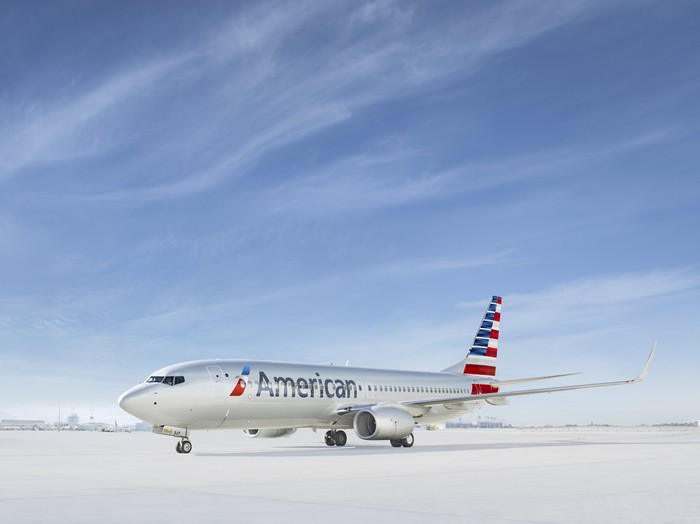On Dec. 9, US Airways and AMR officially merged, and the new American Airlines Group (AAL +4.30%) was opened for trading. However, this merger is far from complete. What happens over the next months and years will play a critical role in determining the value of airline investments and the experience of the traveling public.
Massive merger
Originally signed as an $11 billion merger, the total value of the US Airways-AMR merger rose about 50% by the time American Airlines Group began trading. Needless to say this was a mega merger, and any transaction of this size takes a while to fully accomplish.
Merging airlines also need to integrate operations consisting of thousands of flights, millions of passengers, and billions of dollars. Needless to say, this isn't a flip-the-switch process. United Continental (UAL +4.44%) only got the all clear to integrate its workforce last year, even though the official merger happened in 2010.
Even more smoothly executed mergers, such as the 2008 merger between Delta Air Lines (DAL 0.18%) and Northwest Airlines, take years to complete. After all, it was only in 2010 that Northwest Airlines flew its last flight. So airline mergers mean a lot has to happen before integration fully takes hold. But what should travelers and investors expect first?
Frequent flyer programs
Although US Airways and American Airlines will continue to operate separately, Jan. 7 brought the beginning of frequent flyer mile reciprocity. AAvantage and Dividend Miles participants are now able to both earn and spend miles at either airline. This is one step forward for the linking of flyers from the two airlines, but the next step is even bigger.
Codeshare
The airline industry is comprised of three major airline alliances: Star Alliance, SkyTeam, and OneWorld. These alliances allow airlines to get some of the benefits from a merger without going for the full commitment or angering government regulators. Airline alliances allow carriers to book passengers on other alliance members' flights, greatly expanding the reach of airline networks.
US Airways and American Airlines can't fly together until they get a single FAA certificate, but there's no reason why they can't launch a codeshare. American Airlines Group has already announced that on March 31, US Airways will leave the Star Alliance and join OneWorld alongside American Airlines. Although it's not the final step, this will allow each airline access to the other's network -- and network expansion was a key reason for the merger.
Policy decisions
Airlines all have their own policies, some written and some unwritten. Written policies include things like the size of the fees imposed by the airlines, policies on pets, and priority boarding arrangements. Fortunately, American Airlines and US Airways have the same, or similar, amounts for many fees. The unwritten policies will present a more interesting situation. US Airways has relied on a more basic approach, believing travelers are looking for an inexpensive flight and only minimal amenities. On the other hand, American Airlines has a heavy focus on business travel, and tries to win customers over through better features, even at higher ticket prices.
At this point, American Airlines' strategy is winning as American Airlines Group continues to take delivery of hundreds of new aircraft equipped with the latest features. With the far greater size of American Airlines compared to US Airways, American's culture of features is likely to win in the long run. The new airline cannot afford to strip business travelers of attractive features, and I see the combined airline moving to implement many of American's features over the coming months.
Later in the flight
The reciprocity of the frequent flyer programs and the beginning of a codeshare are major steps in the integration process at American Airlines Group. But the world's largest airline still has a lot more to do. In part two, I'll take a look at what's next on American Airlines Group's agenda and how previous airline mergers have handled the problems.






